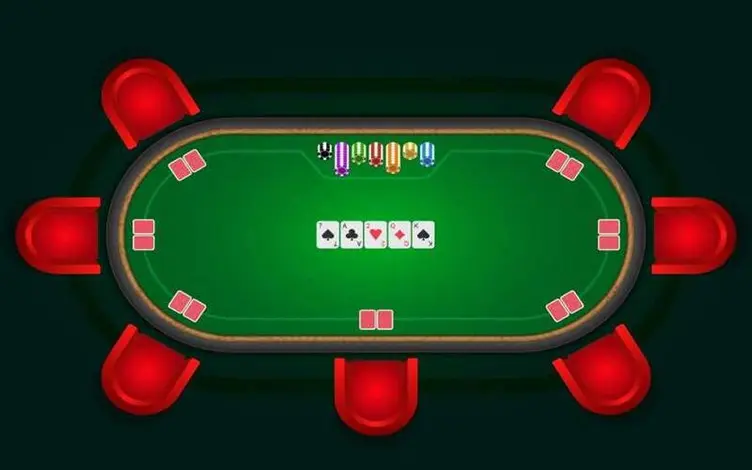Texas Hold’em Poker is a great and very popular game in the world. Watching movies about gambling gods, we often hear “straight flush”. Of course, gambling is always addictive. Here, JLSLOT will guide you through the basics of how to play Texas Hold’em Poker.
Basic gameplay from JLSLOT

Every time the game starts, each player will be dealt 2 cards, these are your private cards and only you can see them, they are called deal cards. Then the next 5 cards will be dealt in three rounds and displayed on the table, these 5 cards are all opened and everyone can see them, and they are called community cards. The first round of community cards will be 3 cards, the second round, and the last round, each round is 1 card. Through each round, players will have the right to bet, so including the first round, when there are only 2 cards, there will be a total of 4 betting rounds for the players, these rounds are called betting rounds.
Texas Poker Game Rules From JLSLOT Expert
In each game casino, before the deal cards are dealt to each player. There will be 2 players who are required to place a bet first. In this case, we call it blinds, because no one has been dealt any cards yet, which means no one has seen any cards yet.
According to the rules of the game, the second player will have to bet an amount of money double the amount of the first player, so here we call the first player the Small Blind, and the second player the Big Blind. These are all specialized terms in poker that have been widely used.
These bets are not placed by anyone but are taken by the 2 people sitting on the left of the Dealer (temporarily called the House). This will be changed continuously after each new game in a clockwise direction, starting from the current Dealer. We can recognize who is the current Dealer by the letter D symbol placed right in front of that person’s seat.
What is your job at the betting rounds?

Remember: each betting round is called a Betting Round.
YOUR CHOICES AT EACH BETTING ROUND:
At the beginning of a betting round, you ask yourself what you are going to do now. Below is a list of choices that you will have to make at each betting round. This is also a basic concept for you to understand how to play Texas Hold’em.
When is it your turn?
To know whose turn it is. This goes clockwise. When one player’s turn is over, it is the next player’s turn.
In the first betting round, the player sitting to the left of the Big Blind will always act first. From the second round onwards, the first person to act is always the person sitting to the left of the Dealer, that is, the person who placed the small blind bet in the first round.
All bets of the players will be placed in the middle of the table. And this position is called the pot. Whoever wins gets the pot.
Texas Hold’em Game Types from JLSLOT

There are a total of 3 different types of games in Texas Hold’em. They are Fixed Limit, No Limit, and Pot Limit. But mainly the 2 types Fixed Limit, No Limit are the most popular.
Fixed Limit: As you can guess by the name, this is a game with a betting limit, playing this type, you cannot bet higher or lower in 1 bet. For example: in a limit game of $10/$20, you can only bet $10 for the first 2 rounds and $20 for the next 2 rounds. This is the type of game that beginners to poker should play.
Pot Limit: You can bet up to the amount of money in the “pot”.
No Limit: You can bet as much as you want! You can play all you want. That means the limit here is only how much money you have.
Conclude
The whole gameplay is like that. Very simple. But the problem when playing is the courage. For example: there is a very large bet on the pot. You want to win to get that amount. But your 2 cards are very bad. Are you still coldly Going All-in with the amount of up to 5 million USD?!!
The amount of money is big enough to “scare” anyone, will your opponent dare to call? when in their mind they think you have a Straight Flush?!! They will Fold everything and of course, you are the winner even though the cards are very bad Of course that is an example and it also depends on who your opponent is.
